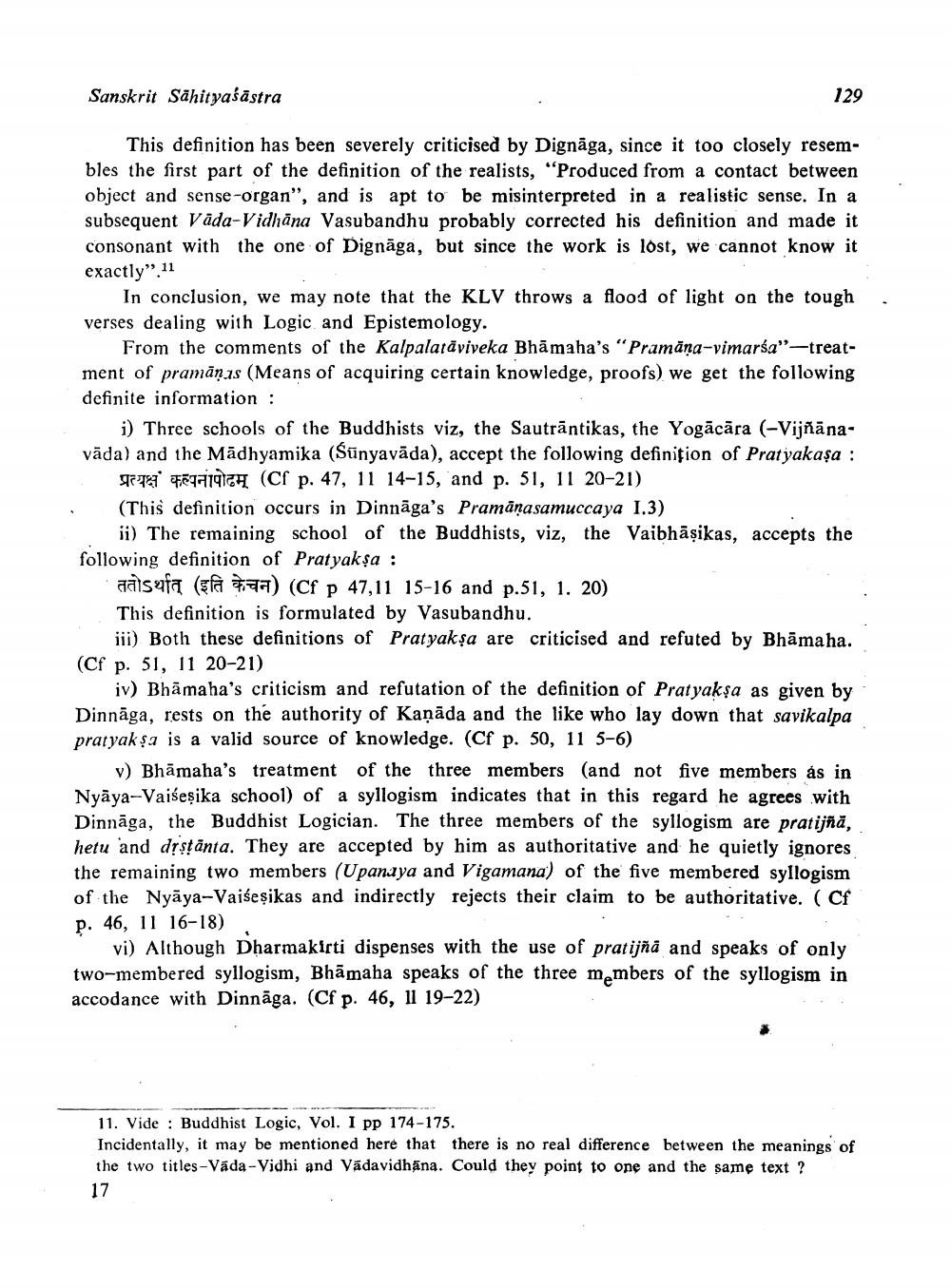________________
Sanskrit Sahityaśāstra
129
.
(This
This definition has been severely criticised by Dignāga, since it too closely resembles the first part of the definition of the realists, "Produced from a contact between object and sense-organ", and is apt to be misinterpreted in a realistic sense. In a subsequent Vāda-Vidhāna Vasubandhu probably corrected his definition and made it consonant with the one of Dignāga, but since the work is lost, we cannot know it exactly" 11
In conclusion, we may note that the KLV throws a flood of light on the tough verses dealing with Logic and Epistemology.
From the comments of the Kalpalatăviveka Bhāmaha's "Pramāņa-vimarsa"-treatment of pramānis (Means of acquiring certain knowledge, proofs) we get the following definite information :
i) Three schools of the Buddhists viz, the Sautrāntikas, the Yogācāra (-Vijñānavāda) and the Mādhyamika (Sūnyavāda), accept the following definition of Pratyakașa :
9789981917# (Cf p. 47, 11 14-15, and p. 51, 11 20-21) (This definition occurs in Dinnāga's Pramānasamuccaya I.3)
ii) The remaining school of the Buddhists, viz, the Vaibhāșikas, accepts the following definition of Pratyaksa :
gaisufa (la Faa) (Cf p 47,11 15-16 and p.51, 1. 20) This definition is formulated by Vasubandhu.
iii) Both these definitions of Pratyakşa are criticised and refuted by Bhāmaha. (Cf p. 51, 11 20-21)
iv) Bhāmaha's criticism and refutation of the definition of Pratyakşa as given by Dinnāga, rests on the authority of Kaņāda and the like who lay down that savikalpa pratyaka is a valid source of knowledge. (Cf p. 50, 11 5-6)
v) Bhāmaha's treatment of the three members and not five members as in Nyāya-Vaiseșika school) of a syllogism indicates that in this regard he agrees with
nāga, the Buddhist Logician. The three members of the syllogism are pratijña, hetu and drstānta. They are accepted by him as authoritative and he quietly ignores the remaining two members (Upanaya and Vigamana) of the five membered syllogism of the Nyāya-Vaiseșikas and indirectly rejects their claim to be authoritative. (Cf p. 46, 11 16-18)
vi) Although Dharmakirti dispenses with the use of pratijñā and speaks of only two-membered syllogism, Bhāmaha speaks of the three members of the syllogism in accodance with Dinnāga. (Cf p. 46, 11 19-22)
11. Vide : Buddhist Logic, Vol. I pp 174-175. Incidentally, it may be mentioned here that there is no real difference between the meanings of the two titles - Vāda-Vidhi and Vādavidhāna. Could they point to one and the same text ?
17




